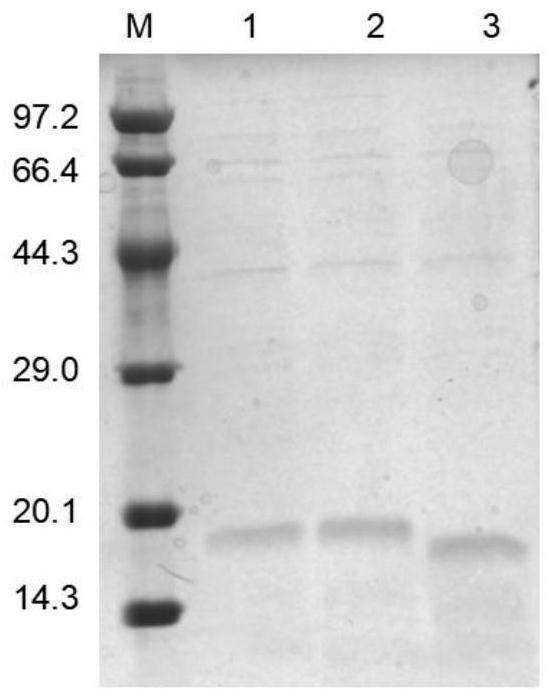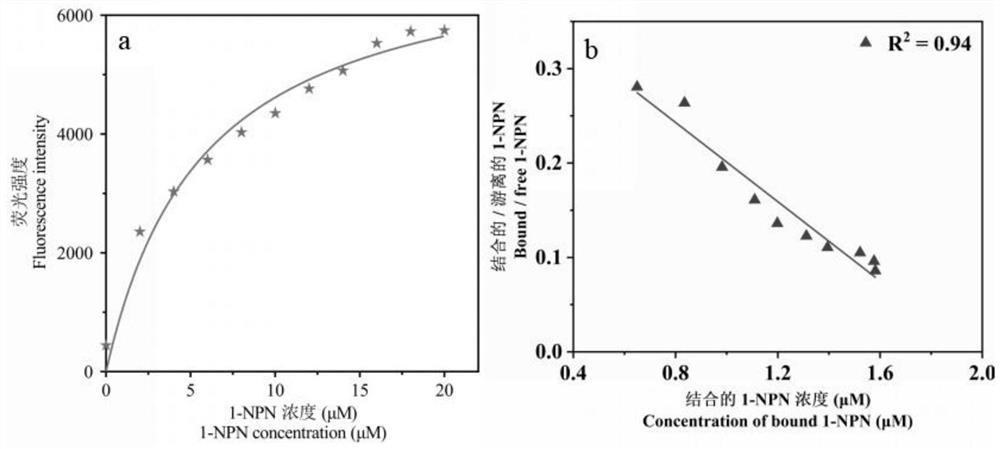Protein PtsuOBP39 bound with volatile compounds of Cinnamomum camphora and insect pheromone, attractant and application of protein PtsuOBP39 and attractant
A technology of volatile compounds and pheromones, applied in the field of molecular biology, can solve problems such as odor-binding proteins OBPs that have not been reported
- Summary
- Abstract
- Description
- Claims
- Application Information
AI Technical Summary
Problems solved by technology
Method used
Image
Examples
Embodiment 1
[0034] Cloning of PtsuOBP39 Gene
[0035] (1) Breeding of Cinnamomum sinensis
[0036] During the rearing, the male and female adults of Cinnamomum chinensis were separated by a gauze net in the middle of the breeding box, and the male and female adults (35 days old, normally feeding but not mated) in the same batch of eclosion were collected for transcriptome sequencing. Three independent biological replicates were set up for both male and female adults, and each replicate contained 6 adults of the same sex. All samples were collected at the same time and cleaned with 75% alcohol, and immediately frozen in liquid nitrogen, stored at -80°C or directly extracted from total RNA.
[0037] (2) Extraction of RNA from male and female adults of Cinnamomum chinensis
[0038] Select the TRIzol (Treasure Biological Engineering (Dalian) Co., Ltd. TaKaRa, Japan) method to extract the total RNA of the male and female adults of Cinnamomum camphorensis, and the extraction steps are as foll...
Embodiment 2
[0089] Relative expression level of PtsuOBP39 gene in the tissues of male and female adults of Cinnamomum chinensis
[0090] (1) Breeding and sample collection of Cinnamomum sinensis
[0091] The field collection and breeding of Cinnamomum camphorus are the same as in Example 1. During rearing, the male and female adults were separated by gauze in the middle of the rearing box, and the male and female adults (35 days old, normally fed but not mated) in the same batch of eclosion were collected for dissection. Three independent biological replicates were set up for both male and female adults, and each replicate contained 30 adults of the same sex. All samples were collected at the same time and cleaned with 75% alcohol, and immediately dissected on ice to obtain antennae, head (excluding antennae), chest, abdomen end, wings and feet and other tissues, and quickly placed them in liquid nitrogen for freezing. Store at -80°C immediately after freezing or proceed directly to tot...
Embodiment 3
[0111] Prokaryotic expression and purification of PtsuOBP39
[0112] (1) Construction of prokaryotic expression vector based on the principle of homologous recombination
[0113] (1) The signal peptide sequence (SEQ ID NO: 9: ATGGGAAAAAGTGCAATATTTTGTGTGGTATTTGTATCCTACTTTTTGGGAGTAGTACAGCTTGGGAGTAGTACAGCTT) of the PtsuOBP39 gene was removed, and the primer design software CE Design (http: / / www. .vazyme.com, Novizyme’s official website) to design primers for the target fragments containing homologous sequences at both ends of the linearized vector; construct primers for the PtsuOBP39 prokaryotic expression vector as follows:
[0114] F: 5'-cgcggatccgaattcgagctcACACCTGTTCCATACCAACATTTATC-3' (SEQ ID NO: 7);
[0115] R: 5'-tggtggtgctcgagtgcggccgcTTATGATATATCATTTGAGATAATGGCC-3' (SEQ ID NO: 8).
[0116] (2) The expression vector pET28a(+) was double digested with two restriction endonucleases to linearize pET28a(+). The PCR reaction system is shown in Table 7.
[0117] Table 7 PCR ...
PUM
| Property | Measurement | Unit |
|---|---|---|
| molecular weight | aaaaa | aaaaa |
| PCR efficiency | aaaaa | aaaaa |
Abstract
Description
Claims
Application Information
 Login to View More
Login to View More - R&D
- Intellectual Property
- Life Sciences
- Materials
- Tech Scout
- Unparalleled Data Quality
- Higher Quality Content
- 60% Fewer Hallucinations
Browse by: Latest US Patents, China's latest patents, Technical Efficacy Thesaurus, Application Domain, Technology Topic, Popular Technical Reports.
© 2025 PatSnap. All rights reserved.Legal|Privacy policy|Modern Slavery Act Transparency Statement|Sitemap|About US| Contact US: help@patsnap.com



